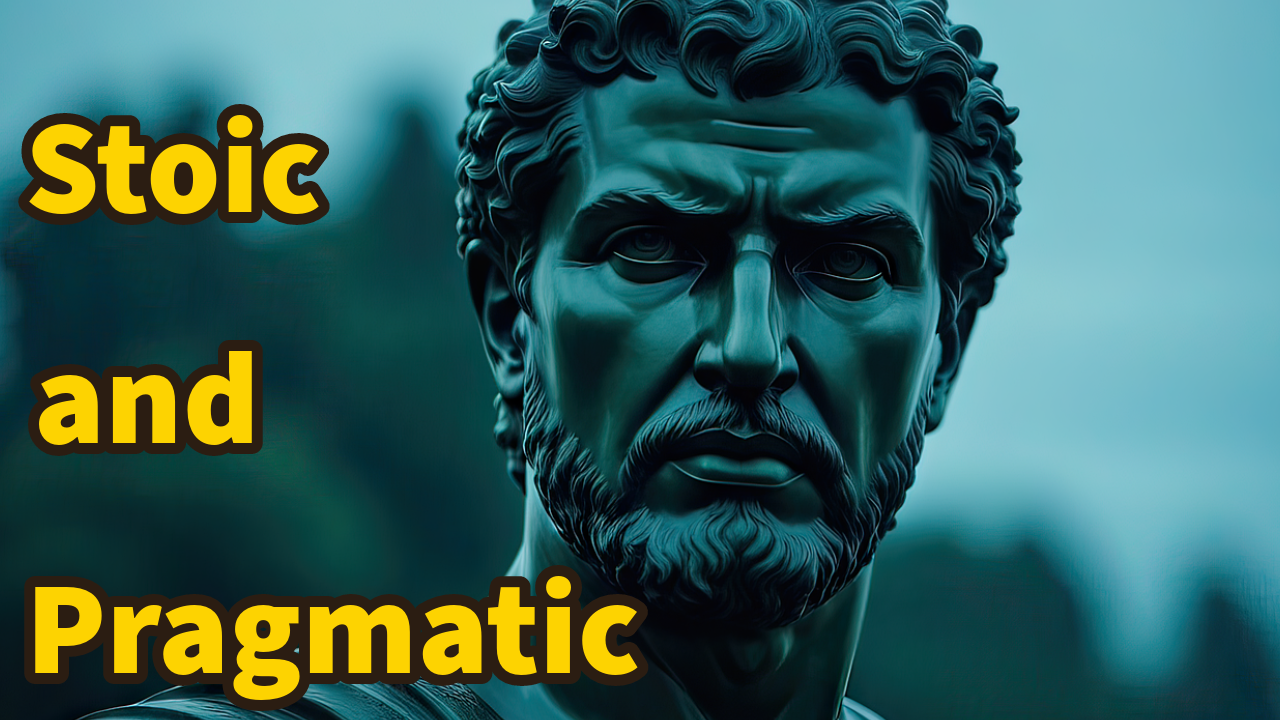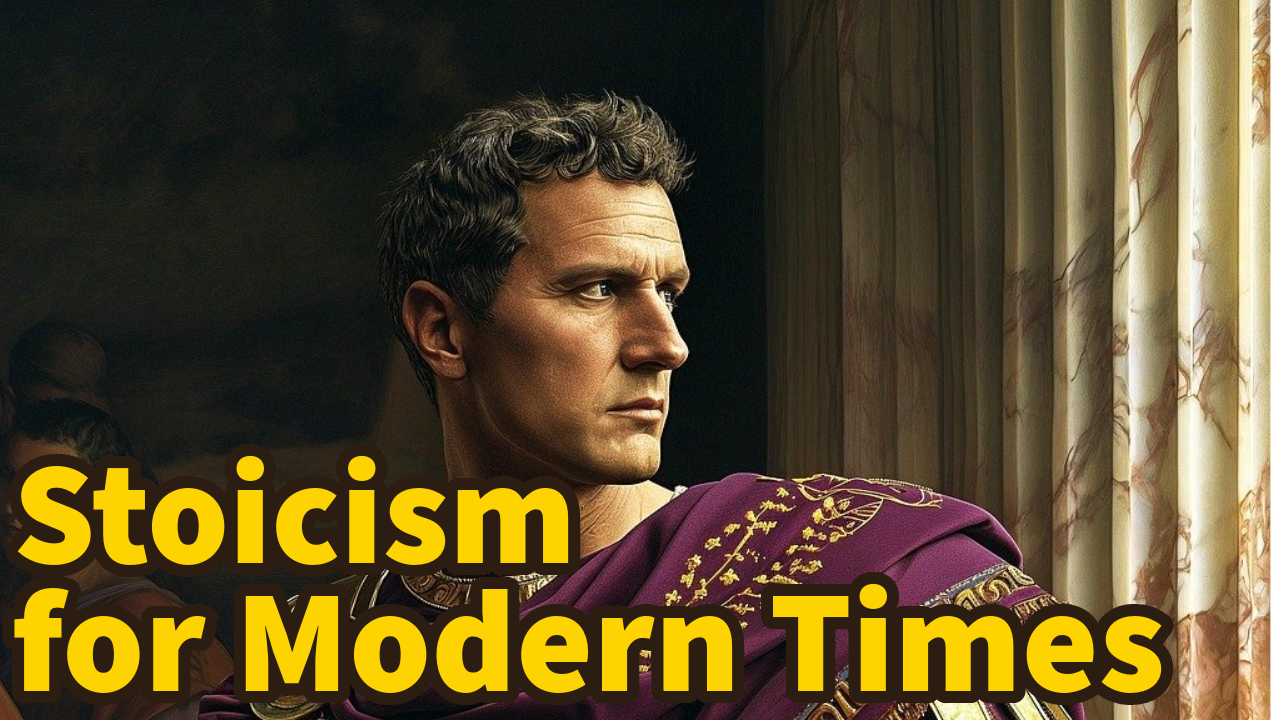
Stoicism offers a wealth of wisdom through its philosophical teachings. Here are 12 of the best Stoic quotes:
- “The happiness of your life depends upon the quality of your thoughts.” – Marcus Aurelius
Marcus Aurelius is highlighting the profound connection between our mental outlook and our experiences of happiness. If we cultivate positive, constructive, and empowering thoughts, we’re more likely to experience greater happiness in our lives. Conversely, if our thoughts are predominantly negative, destructive, or pessimistic, our overall happiness is likely to be diminished. Therefore, by paying attention to and improving the quality of our thoughts, we can enhance our well-being and happiness.
- “Wealth consists not in having great possessions, but in having few wants.” – Epictetus
Epictetus is advocating for a shift in perspective regarding wealth. Instead of measuring wealth solely by the abundance of possessions or material wealth, true wealth is found in simplicity and contentment. When one cultivates a mindset of having few desires and being satisfied with what one already has, they can achieve a sense of inner wealth and fulfillment that transcends material possessions. This aligns with Stoic principles, which emphasize virtue, inner tranquility, and living in harmony with nature rather than being driven by external desires or circumstances.
- “It is not events that disturb people, it is their judgements concerning them.” – Epictetus
Epictetus is highlighting the power of perception and interpretation in shaping our emotional responses to events. According to Stoic philosophy, external events are indifferent—they are neither inherently good nor bad. Instead, it is our reactions, interpretations, and judgments about these events that determine how we feel about them.
By recognizing that our judgments are within our control, Stoicism teaches that we can choose to adopt more rational, objective, and constructive perspectives toward the events in our lives. Rather than being disturbed by external circumstances beyond our control, we can cultivate resilience, inner peace, and emotional stability by reframing our judgments and focusing on what is within our control—our thoughts, attitudes, and responses. This quote underscores the importance of practicing mindfulness and cultivating a wise and rational approach to life’s challenges.
- “The only way to happiness is to cease worrying about things which are beyond the power of our will.” – Epictetus
Epictetus is advocating for a mindset shift: instead of expending energy and causing distress by worrying about things we cannot control, such as external events or other people’s behaviors, we should focus our efforts on what is within our control—our thoughts, attitudes, and actions.
By letting go of worries about things beyond our control and redirecting our attention to what we can influence, we can attain a greater sense of inner peace, contentment, and happiness. This aligns with the Stoic idea of practicing acceptance of external events while focusing on cultivating virtue, wisdom, and inner tranquility.
- “The first step in becoming a philosopher is to be able to bear the sight of the world.” – Seneca
Seneca is emphasizing the importance of cultivating a certain kind of mental resilience. To “bear the sight of the world” implies being able to confront the realities of life without being overwhelmed or disheartened by its challenges, injustices, and uncertainties.
By learning to accept the world as it is, we can lay the groundwork for deeper philosophical inquiry, reflection, and ultimately, the pursuit of wisdom, virtue and freedom. This quote underscores the notion that some approaches to philosophy are not merely an intellectual exercise but also a practice rooted in cultivating a certain mindset and attitude towards life.
- “The wise man will live as long as he must, not as long as he can.” – Seneca
Seneca is advocating for an acceptance of mortality and a recognition of the limits of human life. The wise person does not fear death or seek to prolong life unnaturally but rather lives in accordance with virtue and wisdom for as long as they are meant to live. This aligns with Stoic principles that emphasize living in harmony with nature, accepting the inevitability of death, and focusing on living a life of virtue and meaning rather than merely seeking to extend one’s lifespan.
This quote encourages individuals to prioritize the quality of their lives over the quantity, focusing on living virtuously and meaningfully rather than obsessing over extending their lifespan through any means possible.
Although I DO NOT personally and fully agree with this quote, it may help you if you do.
- “No person has the power to have everything they want, but it is in their power not to want what they don’t have, and to cheerfully put to good use what they do have.” – Seneca
Seneca emphasizes the importance of making the most of what one does have. Rather than lamenting what is lacking, individuals can focus on utilizing their existing resources, talents, and opportunities in a positive and constructive manner. This involves approaching life’s challenges with resilience, optimism, and a willingness to make the best of any situation.
By recognizing and appreciating what they already have, individuals can find fulfillment and satisfaction in the present moment, rather than constantly striving for more or being consumed by dissatisfaction. This aligns with Stoic principles that emphasize acceptance of what is beyond one’s control and a focus on cultivating virtue, resilience, and inner tranquility.
- “The whole future lies in uncertainty: live immediately.” – Seneca
Despite the uncertainty of the future, Seneca encourages living fully in the present moment. Rather than being consumed by worry or anxiety about what might happen in the future, he suggests to live life to its fullest right now.
Seneca is advocating for a mindset of embracing the present moment and making the most of the time we have. Rather than being preoccupied with concerns about what the future may hold, Seneca urges us to focus on taking action and finding meaning in the present.
This mindset allows for greater resilience, inner peace, and fulfillment, regardless of the uncertainties that lie ahead.
- “If a man knows not to which port he sails, no wind is favorable.” – Seneca
Seneca is emphasizing the importance of setting goals, defining objectives, and having a sense of purpose in life. Without clarity about where one is headed, external circumstances or opportunities become irrelevant. This quote underscores the idea that progress and fulfillment require intentional action and direction, rather than simply waiting for favorable circumstances to arise.
By knowing one’s destination and purpose, individuals can align their efforts, make informed decisions, and navigate through life’s challenges with greater clarity.
- “Don’t seek for everything to happen as you wish it would, but rather wish that everything happens as it actually will—then your life will flow well.” – Epictetus
By adopting an attitude of acceptance and aligning one’s wishes with the natural course of events, Epictetus suggests that individuals can experience greater harmony, peace, and well-being in their lives. Rather than resisting or fighting against the inevitable changes and challenges of life, one can learn to navigate them with grace and resilience.
Epictetus is advocating for a mindset shift—from attachment to specific outcomes to acceptance of whatever arises. By relinquishing the desire for control and embracing the inherent unpredictability of life, individuals can find greater inner peace and contentment. This aligns with Stoic principles that emphasize the importance of focusing on what is within one’s control—namely, one’s thoughts, attitudes, and actions—while accepting what is beyond their control.
- “Wealth consists more in use than in possession.” – Seneca
Seneca is highlighting the importance of practical value over mere ownership. Possessing wealth in terms of material possessions is not inherently valuable unless those possessions are put to meaningful use. This aligns with Stoic principles that emphasize virtue, wisdom, and the pursuit of the good life over the accumulation of external wealth or status.
Seneca’s quote encourages individuals to consider how they utilize their resources—whether material or otherwise—and how those resources contribute to their well-being. It suggests that true wealth lies not just in hoarding possessions but in using them wisely and virtuously to enrich one’s life and the lives of others.
- “He suffers more than necessary, who suffers before it is necessary.” – Seneca
Seneca is advising against allowing anticipation, worry, or anxiety about future events to cause unnecessary suffering in the present moment. By focusing on what is within one’s control—namely, one’s thoughts, attitudes, and responses—individuals can minimize unnecessary suffering and cultivate greater resilience and inner peace.
This quote underscores the Stoic emphasis on living in the present moment, accepting what is beyond one’s control, and approaching life’s challenges with rationality. By refraining from suffering prematurely, individuals can conserve their emotional energy and better cope with the inevitable hardships of life when they arise.
These 12 quotes encapsulate some of the core teachings of Stoicism, emphasizing the importance of self-awareness, resilience, and the power of perspective in leading a virtuous and fulfilling life.
What do you think about these 12 Stoic quotes? Let us know in the comment section below and share the post!!!
Video version here:
12 Stoic quotes for Pragmatic Living
Interesting sources, additional info, images, credits, attributions and other points of views here:
https://pixabay.com/illustrations/resilience-victory-force-1697546/
https://pixabay.com/illustrations/ai-generated-flower-resilience-grow-8630801/
https://pixabay.com/illustrations/ai-generated-leadership-inspiration-8569646/
https://pixabay.com/photos/temple-of-hercules-pillars-6517635/
https://pixabay.com/vectors/jupiter-roman-religion-gods-zeus-4811646/
https://pixabay.com/photos/coins-ancient-roman-money-old-4786028/
https://pixabay.com/photos/birds-flying-freedom-ducks-heaven-5159711/
https://pixabay.com/photos/gold-ingots-treasure-bullion-513062/
https://pixabay.com/illustrations/ai-generated-leaves-treasure-chest-8061311/
https://pixabay.com/illustrations/ship-port-dock-ancient-anno-eve-2809426/
https://pixabay.com/illustrations/sailing-ship-compass-steampunk-3224766/



